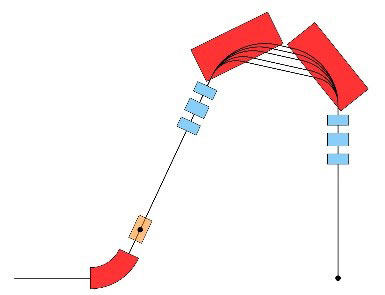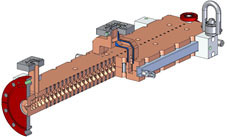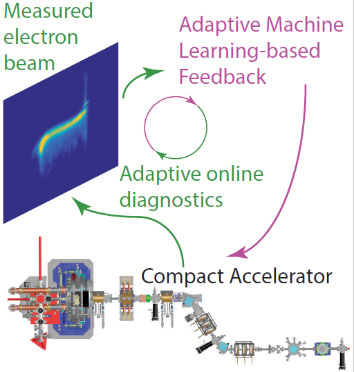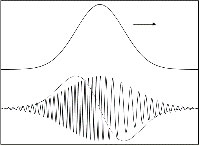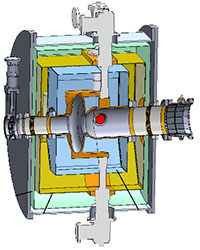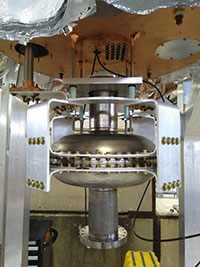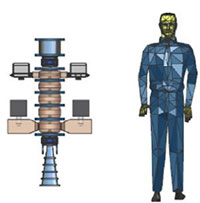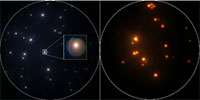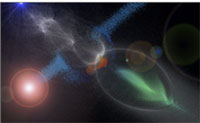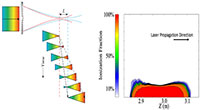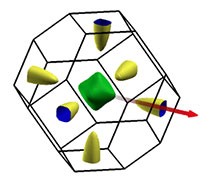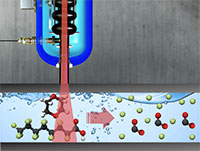Awards
FY 2020
|
Twelve awards were provided on a competitive basis in FY 2020 that seek to improve accelerator technologies across a wide range of applications, including accelerator-based scientific research in such fields as particle physics and materials science, and uses of accelerators for medicine, industry and defense. |
||||
|
Accelerator Technology for Cancer Therapy Awards in this area are for translational R&D to adapt accelerator technologies used for discovery science to provide faster, better, and less expensive patient treatments with proton and carbon ion beams.
|
||||
|
|
|
|||
| High-Efficiency High Power Ultrafast Lasers | ||||
| “Ultrafast” lasers—lasers producing pulses shorter than 1 picosecond—are widely used in scientific research as probes for chemistry, material science, and biology, and are also used to generate, accelerate, and control particle beams. Raising the pulse rate of such lasers 1000x will greatly increase the science that can be accomplished. | ||||
|
|
Lawrence Berkeley National Laboratory, the University of Michigan, and Lawrence Livermore National Laboratory are developing coherent combination of fiber lasers to realize highly efficient ultrashort pulse lasers with an unprecedented combination of high repetition rate and energy. With key enabling concepts recently demonstrated, development is focusing on a 100mJ energy-level demonstration, on technologies to access 100fs pulse lengths and to improve pre-pulse contrast, and on an integrated design to scale future systems to the multi-Joule energies needed by compact laser-plasma particle accelerators and other societally important applications. |
|||
|
|
University of Alabama, Birmingham, University of California Los Angeles, and Brookhaven National Laboratory are collaborating to develop optically-pumped LWIR ultrafast lasers using MWIR laser pumping. A sequence of NIR and MWIR lasers will be used to generate both high energy pump radiation at 4.3 microns and ultrafast seed pulses suitable for pumping and seeding a high pressure isotopic CO2 mixture to produce ultrashort high energy LWIR pulses.
|
|||
|
High-Efficiency High Power Electron Accelerator Technology Technologies capable of providing megawatt-class electron beams for industrial use are rare and expensive. Research in this topic area aims to significantly increase the power and reduce the cost of very high power electron accelerator technology. |
||||
|
|
SLAC National Accelerator Laboratory, L3Harris Electron Devices, and L3Harris Applied Technologies will demonstrate an 80 percent efficient, 100 kW CW High Efficiency Inductive Output Tube at 1.3 GHz and develop a conceptual design for a ten-beam, 1 MW version. The approach combines L3Harris’ proven broadcast amplifiers with modern high efficiency klystron design methods, and will significantly improve the overall efficiency of high power accelerator systems for environmental, medical, and food sterilization applications. |
|||
|
|
SLAC National Accelerator Laboratoryand General Atomics will develop a compact, cost-effective, and energy-efficient linear accelerator for industrial waste treatment and sterilization with high energy and high power electron beams. Novel concepts will be used to achieve continuous wave, 1 MeV, 1 MW electron beam with an rf-to-beam efficiency greater than 95%.
|
|||
|
Compact Accelerators for Security and Medicine R&D in this topic is aimed at cost-effective, robust, automated, near-term compact sources of particles and radiation that enable new capabilities in security and medicine. |
||||
|
|
SLAC National Accelerator Laboratory, Stanford University School of Medicine, and TibaRay Inc. will develop a particle accelerator system to deliver very high energy electrons (up to 100 MeV) in a clinical setting. The results of this R&D will enable, for the first time, direct electron beam therapy for tumors throughout the body at an ultra-fast “FLASH” dose rate that could allow more healthy tissue sparing and overcome challenges of patient motion. |
|||
|
|
Los Alamos National Laboratory and Lawrence Berkeley National Laboratory will develop adaptive machine learning-driven diagnostics and controls for compact accelerators with a focus on ultrafast electron diffraction (UED) for mesoscale material science dynamics. The goal is to develop algorithms that automatically and autonomously adjust for time variation, unmodeled changes, and disturbances to continuously achieve optimal control without the need for constant intervention from beam physics experts, a capability which is of great importance for space-based and medical accelerators.
|
|||
|
Long-Term Accelerator R&D with Broad Applications Awards in this category fund long-term accelerator R&D of broad benefit to many applications, for efforts aimed at a significant increase in accelerator performance and/or decrease in cost. . |
||||
 |
High Accuracy Modeling of Spin-Polarized Beams University of New Mexico, Albuquerque and Cornell University will continue to develop spin matching for electron storage rings, and check its efficacy with fast spin-orbit tracking algorithms. Cornell University will develop the required simulation modules for studying spin and will incorporate the modules, along with software developed elsewhere, into the widely used software package Bmad. |
|||
 |
Next-Generation Ultrafast Electron Diffraction
Cornell University will use the injector section of CBETA to simulate the shortest bunches with small emittance that can be obtained in the MeV energy range, from the DC electron source through Injector cyomodule to the diagnostics line and the merger section connecting the two. Ultrafast Electron Diffraction (UED) is an active area for accelerator physicists and condensed matter physics alike, as it has the potential to form images similar to electron microscopes but with extreme time resolution, for example to produce movies faster than lattice dynamics. |
|||
 |
Advanced Photocathodes with Integrated Photonics University of Southern California and Arizona State University will collaborate to integrate photonics technologies with modern-day photocathodes to revolutionize photoemission-based electron sources. This could lead to higher electron beam brightness and novel beam shaping techniques, enhancing the performance of various particle accelerator and ultrafast electron microscopy applications. |
|||
 |
Turn-Key High Power SRF Accelerators Cornell University will develop and test key technology needed for realizing turn-key, high-power accelerators based on superconducting accelerating cavities for a wide range of compact accelerator applications in industry and science, cutting across disciplines. This work will explore next-generation microwave cavities based on the superconductor Nb3Sn, cooled by conduction using commercial cryocoolers. |
|||
|
Facilitated Use of Office of Science Accelerator R&D Capabilities One award was made under the Accelerator Stewardship Test Facility Program to facilitate access to the unique accelerator research capabilities of the Office of Science National Laboratories. Awards are for up to $300k and up to one year in duration. |
||||
 |
Robust Superlattice Photocathodes for High Current Spin-Polarized Beams Cornell University and Thomas Jefferson National Accelerator Facility will perform experiments aimed at developing new methods to produce robust Negative Electron Affinity activation layers in GaAs-based photocathodes for the production of highly spin-polarized electron beams. Photocathodes coated using these robust layers will be used to perform lifetime and polarimetry measurements in an electron gun with beam energies up to 200 kV and with high currents in mA range. |
|||
FY 2019
|
Thirteen awards were provided on a competitive basis in FY 2019 that seek to improve accelerator technologies across a wide range of applications, including accelerator-based scientific research in such fields as particle physics and materials science, and uses of accelerators for medicine, industry and defense. |
|
|
High-Efficiency High Power Ultrafast Lasers |
|
|
|
Lawrence Livermore National Laboratory will probe the limits of Helium gas cooling of laser amplifier slabs, paving the way for a 100-1000× increase in the average power of state-of-the-art ultrashort pulsed high peak power laser systems. |
|
|
Brookhaven National Laboratory, University of Central Florida, and II-VI Incorporated will conduct a systematic study of properties of a broad range of materials under the action of highly-intense long-wave infrared (LWIR) laser pulses. The results of this study will be applied to advance high-peak-power LWIR lasers into the sub-picosecond mode of operation via non-linear pulse compression. |
|
High-Efficiency High Power Electron Accelerator Technology |
|
|
|
Thomas Jefferson National Accelerator Facility and General Atomics will prototype and test a single-cell superconducting radiofrequency accelerating cavity inside a cryostat cooled by conduction using cryocoolers. The aim is to demonstrate achieving an accelerating gradient usable for a 1 MeV, 1 MW-class continuous-wave electron accelerator for treatment of wastewater or flue gases.
|
|
|
Fermi National Accelerator Laboratory and General Atomics will team up to design an economical superconducting accelerating structure capable of producing high-power, high-energy electron beams for environmental applications. The team will adopt a new cryocooling technology to demonstrate operation of the prototype accelerating structure at cryogenic temperatures. |
|
|
Thomas Jefferson National Accelerator Facility in partnership with ScanTech Sciences Inc. and Hampton Roads Sanitation District will develop 500 kW-class highly-efficient industrial accelerators using a newly designed room-temperature accelerating structure. These accelerators are tailored for use in cleaning up wastewater streams, but are also beneficial for many other applications including fracking fluid remediation, medical sterilization and food pasteurization. |
|
Long-Term Accelerator R&D with Broad Applications |
|
|
|
Simulation of High-Performance Electron Sources |
|
|
Light and Electron Emission as RF Breakdown Probes |
|
|
Theoretical and Experimental Investigation in Accelerator Physics |
|
|
Meter-scale Plasma Channels by Superluminal Ionization Waves |
|
|
From Theory to Practical High-Brightness Photocathodes |
|
|
Impacts of Microstructure on Niobium Superconducting RF Cavity Performance |
|
Facilitated Use of Office of Science Accelerator R&D Capabilities |
|
|
|
Development of High Performance Medium Velocity Superconducting Elliptical Cavities for Hadron Linacs |
|
|
Application of Electron Beam Technology to Decompose Persistent Emerging Drinking Water Contaminants |
FY 2018
Thirteen awards were provided on a competitive basis in FY 2018 that seek to improve accelerator technologies across a wide range of applications, including accelerator-based scientific research in such fields as particle physics and materials science, and uses of accelerators for medicine, industry and defense.
Accelerator Technology for Cancer Therapy
Awards in this area are for translational R&D to adapt accelerator technologies used for discovery science to provide faster, better, and less expensive patient treatments with proton and carbon ion beams.
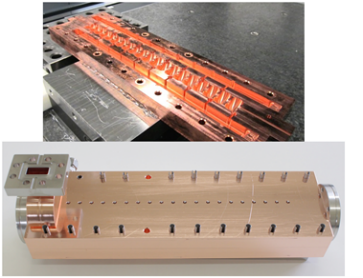
SLAC National Accelerator Laboratory, Stanford University School of Medicine, Loma Linda University, and Varian Medical Systems Inc. will develop a compact particle beam delivery system for cancer therapy capable of delivering beams with rapid (seconds) 3D scanning. This proposal leverages recent advances in RF accelerator technology to achieve this rapid energy and angular modulation.
Argonne National Laboratory, AML Superconductivity and Magnetics, ProNova Solutions, and the Chicago Proton Center will develop scanning magnets to enable compact superconducting gantries for carbon ion beam cancer therapy. The same system would enable even more compact superconducting proton gantries with smaller foot-print than existing designs. The projected outcome is significant reduction in size and cost of beam delivery systems for proton and ion beam therapy.

Lawrence Berkeley National Laboratory and Varian Medical Systems Particle Therapy will develop a novel superconducting magnet design with fully achromatic optics for proton therapy gantries. The technique will eliminate the need for magnet ramping during treatment, providing potential cost savings by simplifying the cryogenic system and opening possible new treatment opportunities.
High-Efficiency High Power Ultrafast Lasers
“Ultrafast” lasers—lasers producing pulses shorter than 1 picosecond—are widely used in scientific research as probes for chemistry, material science, and biology, and are also used to generate, accelerate, and control particle beams. Raising the pulse rate of such lasers 1000x will greatly increase the science that can be accomplished.


Colorado State University, University of Maryland, Oak Ridge National Laboratory, and Few-Cycle, Inc. are collaborating to develop advanced technologies for thermal management, cryo-cooling, bandwidth broadening, and high strength optical coatings for high energy, high repetition rate, ultrafast laser systems.

Laboratory for Laser Energetics at the University of Rochester and Plymouth Grating Laboratory will develop advanced broadband gratings with active cooling for compact, high-average-power (HAP) pulse compressors. Gratings on novel substrates with superior thermomechanical properties and active cooling will support HAP laser pulse compression. The team will design, fabricate, and test broadband grating prototypes suitable for thermal loading and short-pulse damage testing.

University of Michigan will develop advanced techniques for high power laser beam control and feedback. Such techniques are essential for making high-quality particle accelerators.
High-Efficiency High Power Electron Accelerator Technology
Technologies capable of providing megawatt-class electron beams for industrial use are rare and expensive. Research in this topic area aims to significantly increase the power and reduce the cost of very high power electron accelerator technology.
Thomas Jefferson National Accelerator Facility and General Atomics are funded to develop a compact high-power high-efficiency radio frequency (RF) power source for next generation particle accelerators for energy, environmental, medical, scientific, industrial and defense applications. The modular power source will take advantage of low cost commercially available magnetron RF sources (similar to those found in home and industrial microwave ovens), state of the art control techniques, and highly efficient combiners to demonstrate a pathway to megawatt-class power.
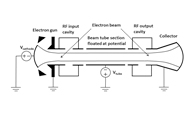
Los Alamos National Laboratory and the University of Maryland will design a novel radio-frequency klystron amplifier with the promise of greatly increased wall-plug efficiency (reducing the power bill for high power accelerators). The new concept is based on decelerating the electron beam in the klystron and letting the electron beam undergo nonlinear bunching due to its own space-charge forces - once highly bunched, the beam is then re-accelerated with a low energy spread which allows more efficient power extraction.
Long-Term Accelerator R&D with Broad Applications
Awards in this category fund long-term accelerator R&D of broad benefit to many applications, for efforts aimed at a significant increase in accelerator performance and/or decrease in cost.
Advanced Methods for Modeling Nonlinear Dynamics
Michigan State University will develop a new 6-dimensional square matrix method to analyze the nonlinear dynamics of particle accelerators. This work is a necessary step to apply the square matrix method to understanding the nonlinear resonance and parameter optimization in future high performance circular accelerators.

Machine Learning for Robust Operation of Accelerators
University of New Mexico and Ion Linac Systems will use machine learning and artificial intelligence to develop accelerator control algorithms that will enable new applications in industry, medicine, and other fields. The work will focus on both algorithmic development and deployment on operational accelerators.

Advanced Concepts for Laser Plasma Accelerators
Cornell University will explore methods to extend plasma interaction distances and potentially enable a new type of radiation source, the ion channel laser.

Plasma Accelerators for Compact Gamma-Ray Sources
University of Nebraska-Lincoln is using high-power ultrafast lasers to improve the performance of advanced laser-driven plasma wakefield electron accelerators, which have applications in research, medicine, industry, defense, and national security.
Facilitated Use of Office of Science Accelerator R&D Capabilities
For the first time in 2018, an award was made under the Accelerator Stewardship Test Facility Program to facilitate access to the unique accelerator research capabilities of the Office of Science National Laboratories. Awards are for up to $300k and up to one year in duration.
Preliminary Investigation of Novel Superconductors for Complex Cavity Geometries
Old Dominion University and Thomas Jefferson National Accelerator Facility have partnered to do preliminary investigation of the application of novel superconductors and processing techniques to superconducting rf (SRF) cavities of complex geometries. This could lead to the development of small, affordable SRF accelerators for a wide range of applications such as compact light sources.
FY 2017
Eight awards were provided on a competitive basis in FY 2017 that seek to improve accelerator technologies across a wide range of applications, including accelerator-based scientific research in such fields as particle physics and materials science, and uses of accelerators for industry and defense.
High-Efficiency High Power Ultrafast Lasers
“Ultrafast” lasers—lasers producing pulses shorter than 1 picosecond—are widely used in scientific research as probes for chemistry, material science, and biology, and are also used to generate, accelerate, and control particle beams. Raising the pulse rate of such lasers 1000x will greatly increase the science that can be accomplished.

Lawrence Berkeley National Laboratory, the University of Michigan, and Lawrence Livermore National Laboratory are funded to demonstrate a fiber laser that combines light pulses coherently in space and time, giving a 300x energy increase in pulse energy. The system is inherently scalable; one with a 50,000x energy increase could enable compact, high efficiency fiber lasers to reach the pulse energies needed by "tabletop" laser-plasma particle accelerators, which would benefit many societally important applications.

University of Alabama Birmingham, Massachusetts Institute of Technology, University of California Los Angeles, and Brookhaven National Laboratory have teamed up to demonstrate a broadband high-pressure CO2 amplifier optically pumped by pulses from an energetic mid-infrared laser system. Through experiments and simulations innovative combinations of novel gas laser and solid-state laser technologies will be explored and optimized for production of very high power long-wave infrared ultrafast pulses at a high repetition rate.
Concept Studies of Accelerators for Energy & Environmental Applications
Two teams were awarded funds to complete technical and economic feasibility design studies of very high average power electron accelerator technologies that can drive new methods of wastewater, bio-solid, flue gas, and medical waste cleanup.
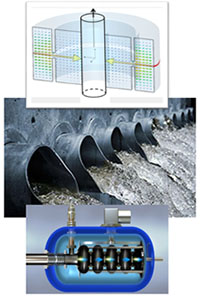
- Los Alamos National Laboratory and the Air Force Research Laboratory will investigate a new accelerator design – the radial RF beam source. Capable of generating an annular electron beam, the new source design may present advantages for waste-stream processing if scaled to high average power. LANL and AFRL will model the performance of the new accelerator design, and perform initial scoping studies for efficiency and cost of operations;
- Fermi National Accelerator Laboratory, and the Metropolitan Water Reclamation District (MWRD) of Greater Chicago have partnered to develop a conceptual design for a very high power (~10 MW-class) superconducting accelerator to address the requirements of a large municipality for treating wastewater and biosolid streams.
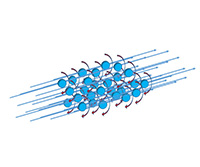
Optimized Design of Spin-Polarized Beams
University of New Mexico, the Thomas Jefferson National Accelerator Facility, and Cornell University will collaborate to improve the polarization control of electron and positron beams in accelerators and storage rings. A widely-used computer simulation tool will be extended to include advanced optimization techniques for polarization control. The enhanced software will be applied to design new particle accelerators that extend the reach of science.
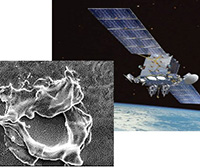
Systematic Study of Broadband Multipactor
University of California Davis, and SLAC National Accelerator Laboratory will develop and carry out full spectrum, radio frequency (RF) laboratory tests aimed at understanding breakdown phenomena (“multipactor”) and evaluate novel techniques to detect and mitigate breakdown before damage can occur to particle accelerators, space-based RF systems, and in other high power microwave (HPM) applications.
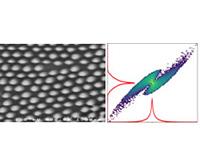
Very High Current Electron Sources for Industrial Applications
Northern Illinois University and Fermi National Accelerator Laboratory will explore designs of high-current electron sources for integration into a superconducting radiofrequency (SRF) injector. Field-emission and thermionic cathodes will be tested in high energy efficiency SRF resonant cavities. The proposed electron sources will enable the development of multi-megawatt electron accelerators for industrial and societal applications.
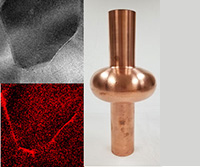
Advanced Approaches to Superconducting Cavities
Florida State University, University of Texas–Arlington, and DMS South / Bailey Tool LLC will team to develop methods to form superconducting Nb3Sn coatings inside copper accelerating cavities. The outcome could lead to reduction of materials cost by a factor of 20, enhanced flexibility of cavity design, and operation of high-power accelerated beams for industrial applications without complicated helium cryogenics.
FY 2016
Nine awards were provided on a competitive basis in FY 2016 that seek to improve accelerator technologies across a wide range of applications, including accelerator-based scientific research in such fields as particle physics and materials science, uses of accelerators for industry and defense, and medical applications for advanced cancer therapies.
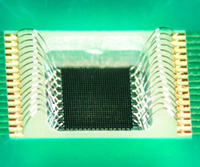
High Precision Beam Detectors for Cancer Therapy
Stony Brook University, Brookhaven National Laboratory, and Best Medical International will adapt high-speed diamond-based x-ray detectors for use in high precision proton and carbon ion beam position and dosimetry monitoring. The new detectors will provide three orders of magnitude improvement in speed and precision, while also improving durability over current technology.
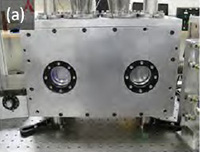
High-Efficiency High Power Ultrafast Lasers
Colorado State University, Lawrence Livermore National Laboratory and the University of Maryland will develop advanced laser technologies for thermal management, cryo cooling, and high strength optical coatings, deploying them on a prototype high power ultrafast laser system.
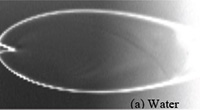
University of Michigan will develop advanced techniques for high power laser beam control and feedback. Such techniques are essential for making high-quality particle accelerators.
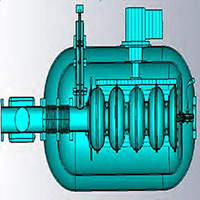
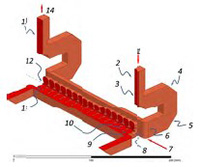

Concept Studies of Accelerators for Energy & Environmental Applications
Three teams were awarded funds to complete technical and economic feasibility design studies of very high average power electron accelerator technologies that can drive new methods of wastewater, bio-solid, flue gas, and medical waste cleanup.
- Fermi National Accelerator Laboratory, Colorado State University, Northern Illinois University, Calabazas Creek Research, Euclid TechLabs, Advanced Energy Systems, and the Metropolitan Water Reclamation District of Greater Chicago have teamed up to develop a concept for a high power superconducting accelerator that could transform water treatment, improving quality and lowering consumer costs;
- SLAC National Accelerator Laboratory, General Atomics, and Texas A&M University have teamed up to develop a concept for highly efficient, high average power industrial systems with reduced construction and operating costs for energy & environmental applications; and
- Thomas Jefferson National Accelerator Facility, Advanced Energy Systems, and General Atomics have teamed up to develop a concept for a high power superconducting accelerator for SOx and NOx removal in flue gases, and waste water treatment.
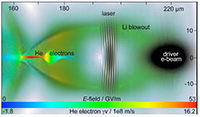
New Sources of Particles and Radiation
University of California, Los Angeles is funded to conduct a broad R&D program in novel techniques for particle generation, acceleration, and radiation generation. These techniques will lead to new tools for material science and future generations of compact accelerators.

Fundamental Studies of Superconductors
Michigan State University, Florida State University, Ohio State University, Arizona State University, the National High Magnetic Field Laboratory, and Thomas Jefferson National Accelerator Facility have teamed up to take an interdisciplinary approach to studying the fundamental properties of niobium as a superconductor. Better understanding of the underlying material properties will significantly improve the performance and reduce the cost of accelerators.
FY 2015
Six grants were awarded on a competitive basis in FY 2015 that seek to improve accelerator technologies across a wide range of applications, including accelerator-based scientific research in such fields as particle physics and materials science, uses of accelerators for industry and defense, and medical applications for advanced cancer therapies.
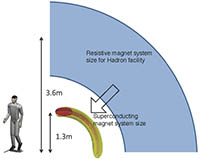
Superconducting Magnet Technology for Cancer Therapy
Lawrence Berkeley National Laboratory, the Paul Scherrer Institute, and Varian Particle Therapy, Inc. will develop light-weight superconducting magnet technology that will reduce the size and weight of particle beam delivery systems for cancer therapy by nearly a factor of 10. Leveraging technologies and techniques developed for the magnets of the Large Hadron Collider, a prototype gantry bending magnet will be built and tested.
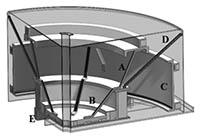
Superconducting Cyclotrons for Cancer Therapy
The Massachusetts Institute of Technology and ProNova Solutions, LLC will develop an innovative design for an ironless superconducting cyclotron capable of providing particle beams for cancer therapy. Cyclotrons today account for nearly 60% of all particle beam therapy machines in the world. This iron-free design will weigh 6 times less than conventional devices.

Ultrafast Laser Technology R&D for Accelerators
Lawrence Berkeley National Laboratory, Lawrence Livermore National Laboratory, and the University of Michigan will test technologies that promise to increase the speed of laser-based science 1000 times. Ultrafast lasers—emitting pulses a few millionths of a billionth of a second in duration—are widely used in chemistry, biology and material science, and show promise for driving entirely new kinds of compact particle accelerators. The efficiency, reliability, and low cost of fiber lasers have led to rapid growth of their use in material processing industries. Adapting these technologies to produce higher pulse energy will speed ultrafast laser-based science, and enable compact sources of particles for a wide variety of basic research and security applications.

Energy Efficiency Improvements for Office of Science Accelerators
SLAC National Accelerator Laboratory and Communications & Power Industries, LLC will develop energy recapture technology that can potentially save $1M per year in operating costs for Basic Energy Sciences’ LCLS facility, and which could be applied wherever klystron-powered linacs are used. A significant number of accelerators are powered by high power radiofrequency sources that rarely exceed 50% energy efficiency. The new technology will capture and recycle a significant portion of the unused 50%, raising the energy efficiency to 75%, saving on operating costs and reducing DOE’s carbon footprint.
In addition to the applied R&D thrusts described above, the Stewardship program makes long-term investments in basic R&D to develop new concepts, methods, and underlying technologies needed to maintain U.S. leadership in accelerator technology.

Accelerator Control Systems
Cornell University will apply advanced optimization techniques to automate the control of complex accelerators. Modern accelerators often have thousands of “knobs” that must be precisely tuned to keep the accelerator operating at peak performance. Cornell’s automation and optimization techniques will improve the performance of accelerators large and small.
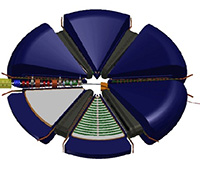
Innovative Beam Dynamics for High Power Accelerators
Texas A&M University will explore strong focusing techniques in cyclotrons to increase the beam power that this workhorse accelerator can produce. Widely used for medical and industrial uses, increased beam power equates to increases in material processing throughput and will enable new applications for this well-established technology. TAMU’s R&D studies will tackle challenging beam dynamics issues that limit the power cyclotrons can produce.


